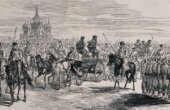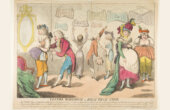Hitler's Noxious Plan to 'Restructure' Berlin
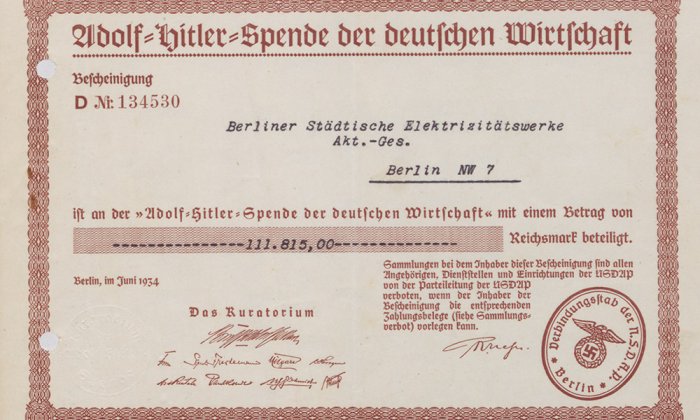
On June 12, 1933, the supervisory board of Berlin’s electricity utility, Bewag, met fully for the first time since the Nazis had come to power four months earlier. It was always going to be a tense event. The supervisory board comprised not only municipal officers from Berlin and representatives of Prussian and Reich power utilities, but also delegates of leading international banks holding shares in the utility. Some of these bankers — as city officials had been keen to highlight in advance of the meeting — were Jews.
The meeting began innocuously enough with presentations by Bewag’s two directors, Johannes Adolph and Martin Rehmer, on the historical development of electricity in Berlin and the city’s power generation and distribution system. Neither made any reference whatsoever to what had happened since January 1933. Then a Herr Plüer took the floor to talk about “staff issues.” He launched into a diatribe against the way the utility had been run in the past and on how it was already changing under the new regime.
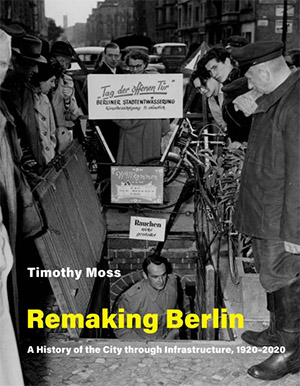
He began by venting his frustration at the result of the works council elections held on March 1, 1933, in which only 520 of Bewag’s 6,400 employees had voted for candidates of the Nazi Party. He reported how, at the first meeting of the new works council, this unfavorable result had prompted police to arrest its members and search its offices. Plüer and a Nazi colleague, he officiously stated, had subsequently taken over leadership of staff administration at Bewag and begun sacking what he termed “Marxist elements.” At the time of the supervisory board meeting 129 workers and 163 administrative staff had been dismissed, including 28 Jewish employees. As their dismissal was for “political” reasons, they were to receive no compensation. Plüer concluded by warning that this was just the beginning: A plan was currently being implemented to occupy all units at Bewag with National Socialists.
We can only imagine how the international board members reacted to this shocking speech. According to the minutes it was followed by two further presentations by senior Bewag employees on electricity tariffs and advertising that also failed to mention the Nazi seizure of power, or indeed what they had just heard. To add a truly surreal touch to the event, the whole procedure was framed by a cooking demonstration, conducted by a nameless “lady” (the only woman present, according to the minutes), to show that it was possible to bake with electricity.
Plüer concluded by warning that this was just the beginning: A plan was currently being implemented to occupy all units at Bewag with National Socialists.
This charged meeting reveals so clearly the juxtaposition of the old and new politics shaping Berlin’s electricity system. At this turning point in June 1933 we see the Bewag directors in a state of denial — acting as if nothing had changed — and Nazi insurgents relishing their new-gained powers over the utility.
From Berlin to Germania
Taking control of Berlin had always been a prime ambition of the National Socialists. This was partly, of course, because it was the nation’s capital and seat of government. Presiding in Berlin meant presiding over Germany. Just as significant, however, was the symbolism attached to overpowering a city that represented so much that Hitler and his cohorts detested. To Nazis, Berlin epitomized the culturally “degenerate” metropolis, rampant economic liberalism and powerful Marxist laborism. It was also home to more than one in four of Germany’s Jews. Exorcizing Germany’s capital of these behemoths was, for Nazi leaders, an obsession long before Hitler came to power.
If there was one project of the Nazi regime that symbolized the subjugation of Berlin to the Reich better than any other, it was Hitler’s dystopian idea to “restructure” the city into a world capital, to be called Germania, and its brutal application by his chief architect, Albert Speer. Speer, as Hitler’s newly appointed Inspector General of Buildings (GBI) in the Nation’s Capital, was granted exclusive powers over urban planning in Berlin. He was entrusted with the monumental task of rebuilding Berlin in Hitler’s image.
Hitler saw in the young architect, who had previously designed his new Reich chancellery, the requisite combination of personal devotion and ruthless ambition to put this fantasy into practice. To guarantee Speer a free hand in the venture, Hitler decreed that Speer’s staff should not be answerable to either a government agency or a municipal council. The GBI was granted special powers as the supreme planning authority for all Berlin, effectively eliminating municipal autonomy over issues of urban development. The sole purpose of reconstruction was to provide material expression to Germany’s prowess and power. In historian Martin Kitchen’s words, it was “an architectural expression of boundless ambition that bore no relation whatsoever to Berlin’s immediate needs or future requirements.”
In historian Martin Kitchen’s words, it was “an architectural expression of boundless ambition that bore no relation whatsoever to Berlin’s immediate needs or future requirements.”
The plan for a new Berlin developed by Speer envisaged a city of 8 million inhabitants. The centerpiece was a north-south axis of truly monumental dimensions, measuring about four and a half miles long and 400 feet wide. This vast parade ground was to be framed by two new railway stations, lined by government buildings and dominated by two iconic structures: a victory arch in the south and a domed hall in the north that — with a height of around 380 feet — dwarfed the neighboring Reichstag building. At this point the north-south axis was to be crossed by a second, east-west axis that passed through that symbol of military supremacy, the Brandenburg Gate. To plan and implement this monstrosity Speer was given a blank check by Hitler. The costs of the enterprise were, at the time, unknown and subsequently estimated by Speer at lying somewhere between 16 and 24 billion Reichsmark — about 100 to 150 billion U.S. Dollars in today’s money.
Presented to the public as a reconstruction project, it was experienced in practice, largely, as one of destruction. Building a new city on such a scale meant first destroying those parts that stood in the way. Overall, Speer estimated the number of homes needing to be demolished at between 100,000 and 150,000. This was at a time when Berlin already lacked around 190,000 homes to house its growing population. There is a bitter irony to a cartoon of Bewag laborers that was intended to demonstrate how they were contributing to the reconstruction of Berlin in Speer’s image, laying power cables, but actually shows them hacking the city to bits.
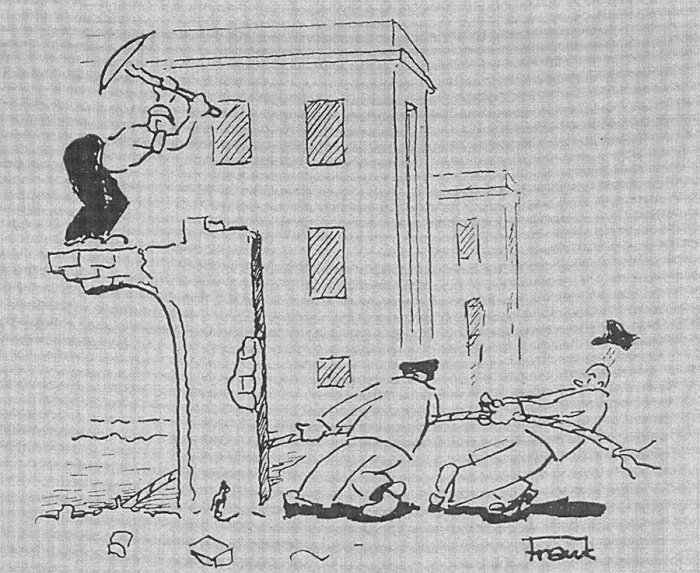
The destruction wreaked by Speer in Berlin was not only physical. Forced labor by inmates of concentration camps on a massive scale was an integral part of the reconstruction program. Following an agreement between Speer and Himmler in July 1938, some 10,000 camp inmates were used for producing the stone and brickwork to rebuild Berlin. By the time work finally stopped in February 1943, some 130,000 laborers from across Europe had been, to a greater or lesser degree, forcefully enrolled in reconstructing the city.
Speer was instrumental not only in forced labor, but also in forced evictions. Even before the November 1938 pogroms Speer was calling for measures to evict Jews from their homes in order to relieve the housing crisis exacerbated by his own destructive scheme. When the deportation of Jews from Berlin began in August 1941, Speer’s organization was a prime beneficiary, seizing 23,765 apartments occupied by Jews by the end of October 1942.
Abusing the networked city
The role of Berlin’s infrastructure systems in the Germania project is difficult to ascertain, given the absence or unavailability of sufficient documentation. There is little known, in particular, about the enrollment of the energy utilities beyond anecdotal evidence. This shows that Bewag was actively involved in constructing the lighting system along the east-west axis, still visible today, appointing a special representative to Speer’s GBI. By October 1940 it had laid electricity cables, built transformer stations, and completed heating systems in buildings along the north-south axis.
Other sources reveal the outlines of a plan for expanding and reordering the wastewater system to accommodate the enlarged city. This envisaged building four large sewage treatment plants on existing sewage farms to the south of the city and a further four to the north, so as to free up land for new settlements. Beyond the autobahn ring a whole new network of sewage farms was to be constructed, where wastewater reuse cooperatives would farm on a massive area of close to 500,000 acres. The costs were estimated at 832.5 million Reichsmark.
This wastewater plan is indicative of Nazi rule in two ways. First, it reflects the coexistence of biological treatment and wastewater reuse for agricultural production. Second, it was drawn up not by the city’s wastewater utility, but by the GBI. Indeed, representatives from the utility were excluded from discussions at the GBI unit dedicated to wastewater issues. The scheme — described by the utility after the war as “boundless and unfeasible” — was finally stopped in 1942.
Sources on the water sector permit better insight into how Berlin’s utilities were enrolled in the Germania project. Correspondence of the water utility reveals much of the euphoria, but also disruption and concerns that accompanied the reconstruction of the city. In the words of the utility director, Karl Kasper, what was required were new plans for the entire water mains system, adapted to the new radial thoroughfares and ring roads. The extension of the conurbation well beyond existing city limits called for a water infrastructure capable of supplying a much larger population spread over a far greater area. All water works were called upon to deliver additional water to meet the anticipated surge in demand. Test drilling was conducted in increasingly distant locations to tap the necessary groundwater resources.
At the same time, the water utility was concerned that Speer’s plans for the city would involve land use that jeopardized groundwater protection in and around the city. In a letter to Speer, dated April 19, 1940, directors Kasper and Poth warned him urgently against designating water protection zones as suitable areas for bathing and water sports for reasons of hygiene.
Cleansing the “degenerate” city
A particular curiosity at this time — and one connected, in all probability, to the plans for Germania — was an intervention by Hitler himself in the water supply system for Berlin. It appears to have been the only time that the dictator took a personal interest in Berlin’s utility services. On September 30, 1940, Speer sent a letter to the Berlin mayor informing him that Hitler was dissatisfied with the quality of Berlin’s drinking water and demanded that it should be restructured along the model of Vienna, Rome, and Athens.
Clearly, none of these challenges was considered by Hitler, who was probably captivated rather by the fanciful notion of using Alpine springs to cleanse the degenerate city.
What Hitler meant by this, it subsequently transpired, was supplying water from mountain springs. This letter sent shock waves through the city administration, landing at the water utility, as it called for a written response to Speer not on whether, but on how this ludicrous idea was to be put into practice. Hitler’s intervention was founded on a series of misconceptions. First, water from mountain springs is not inherently superior in quality to that extracted from groundwater aquifers, as was well known at the time. Second, Berlin was envied by water specialists across Europe for the documented quality of its drinking water. Third, the huge distance between Berlin and any elevation that could merit the term mountain would require water transfers on a massive scale along large, expensive pipelines. Fourth, it was not at all clear which mountain sources would be large enough to satisfy the thirst of the growing capital. Clearly, none of these challenges was considered by Hitler, who was probably captivated rather by the fanciful notion of using Alpine springs to cleanse the degenerate city. Speer, who should have known better, allowed the idiotic idea to take its course.
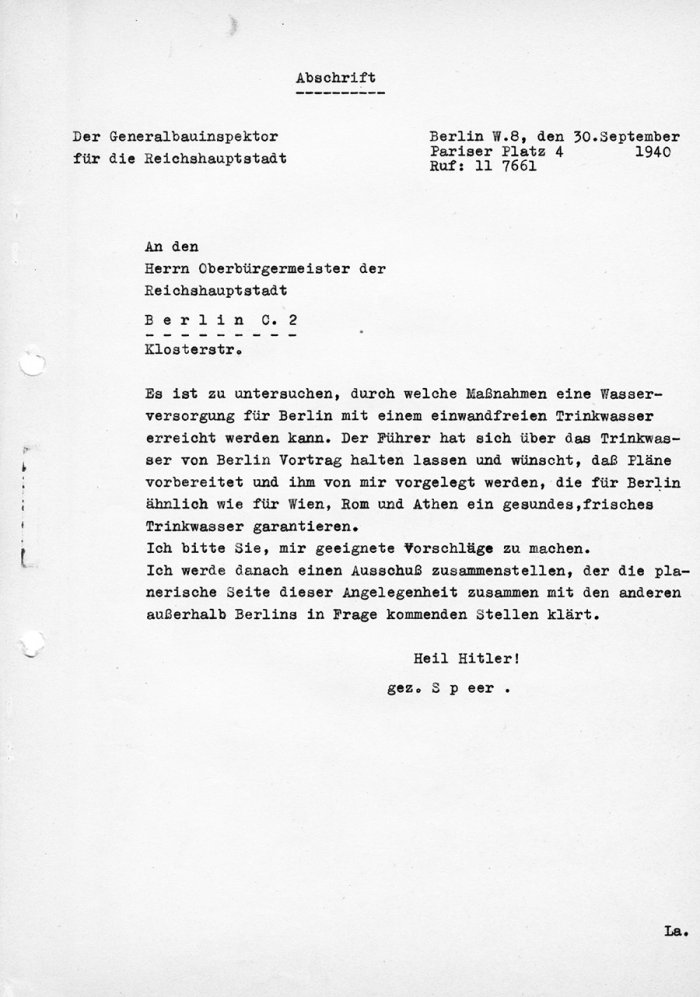
The Berlin water utility was not in a position, of course, to dismiss the idea out of hand, but felt obliged to commission no less than four separate reports from leading experts explaining, in as guarded a way as possible, why it was advisable to stick to the existing, proven system of water supply. These reports, produced over the following 15 months, argued that mountain-sourced water was not necessarily better than groundwater, that Berlin had enjoyed very low rates of water-borne diseases with its current system, and that the quality of Berlin’s water was actually far superior to that of Vienna, Rome, or Athens.
Having written letters to water utilities in mountainous regions situated in the Bavarian Forest, Upper Silesia, the Sudetenland, and the Viennese Alps, the Berlin utility was able to report back that sufficient water resources for Berlin from these areas were simply not available. For added effect, it pointed out that the long-distance pipelines required would be highly vulnerable to enemy attack from the air. It took until February 1942 for the directors of the Berlin water utility to draft their carefully worded response to Speer. In May that year the city’s mayor decided not to forward this response to Speer, assuming that he had, by then, far more pressing concerns. The whole episode is highly revealing about how urban infrastructure was (dis)regarded by the Nazi leadership and how infrastructure strategy was informed more by spontaneous intervention than measured deliberation.
Remaking Berlin
During the past 100 years Berlin has been “remade” many times. Writing in 1929, Franz Hessel spoke of Berlin being “always on the move, always on the point of turning into something different.” Echoing this sentiment in 2006, Allan Cochrane wrote that “Berlin’s histories past and present are always in the process of being made, always provisional, never finalized.” In this volatile and ephemeral history, what role did infrastructures play? Did energy and water infrastructure act as a stabilizing force in the face of so much volatility? Was there, to quote historian Dirk van Laak, “a striking discrepancy between the discontinuity of political history [of Germany] on the one hand and the continuity in building and expanding infrastructures on the other”? Or did infrastructures mirror, and even reinforce, regime change and geopolitical intervention?
Exploring, as I do in my book “Remaking Berlin,” how infrastructure systems in Berlin were affected by dramatic regime shifts — from the Weimar Republic, the Nazi dictatorship, socialist East Berlin, capitalist West Berlin to the reunified city — reveals attributes of sociotechnical configurations hidden in other cities by the patina of familiarity. Why does this matter? Because infrastructure history can tell us a lot about a city, as it does about Berlin: in terms of how it was envisioned, structured and governed in the past and what these legacies can mean for shaping its future.
Infrastructures, in their multiple guises, are potent conduits of the urban condition. They channel life-supporting flows through the city, transform natural resources into usable services, enact political aspirations, reflect power relations and attract contestation. By explicating these dimensions to Berlin’s infrastructures, my book dispels the legendary invisibility of “underground urbanism” and renders infrastructure pasts “usable,” as an experiential resource of untapped value for confronting the challenges facing our cities today.
Timothy Moss is Senior Researcher at the Integrative Research Institute on Transformations of Human–Environment Systems at Humboldt University of Berlin and the author of “Remaking Berlin,” from which this article is adapted.
